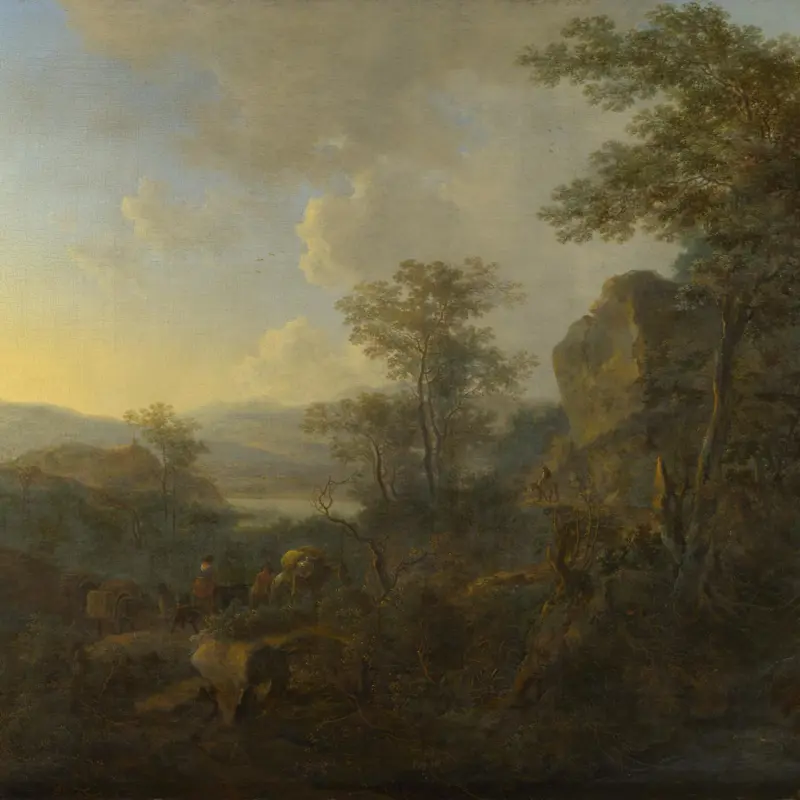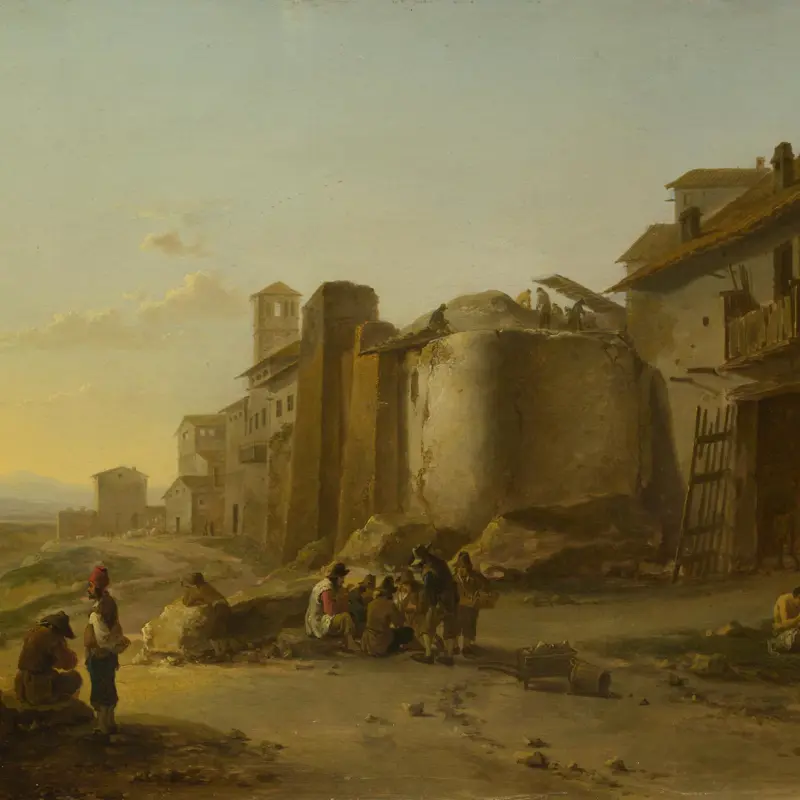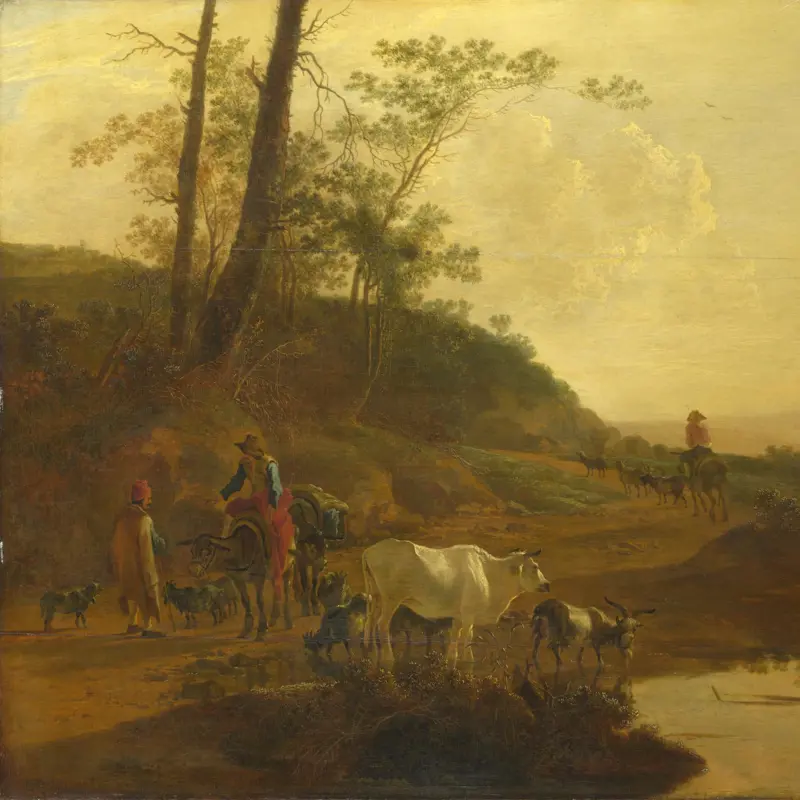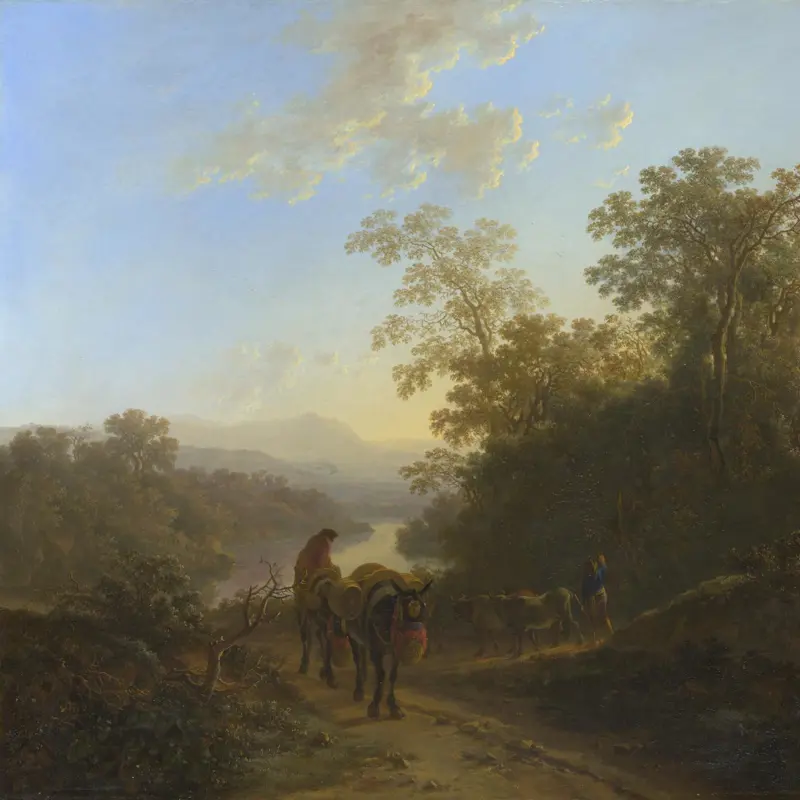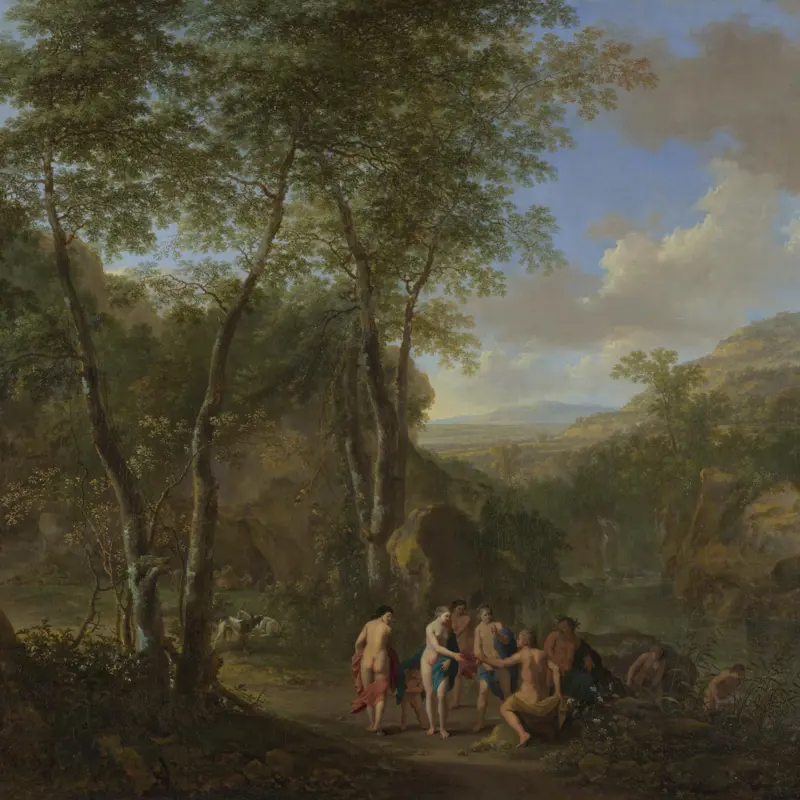Jan Both, 'A Rocky Italian Landscape with Herdsmen and Muleteers', about 1645
About the work
Overview
The tranquillity of the Campagna – the countryside around Rome – stretches far into the distance under a soft golden light. Muleteers, who lived by transporting goods on the backs of their patient mules, move at a leisurely pace across the mountainous landscape, its paths winding in and out of rocky outcrops down to the misty valley.
The sun catches the white sleeves, collar and stockings of two men – making them a focus of the picture – as they stop for a rest and a chat in the shade close to us. But all is not quite as perfect as first appears. The mule behind the herdsmen carries heavy rolls hanging from a cumbersome wooden saddle. His head droops and his legs are painfully thin. Although Both paints the countryside as a romantic idyll he makes sure that, for a discerning eye, the realities of life in the Italian hills are visible.
Key facts
Details
- Full title
- A Rocky Italian Landscape with Herdsmen and Muleteers
- Artist
- Jan Both
- Artist dates
- About 1615 - 1652
- Date made
- About 1645
- Medium and support
- Oil on canvas
- Dimensions
- 103 × 125 cm
- Inscription summary
- Signed
- Acquisition credit
- Wynn Ellis Bequest, 1876
- Inventory number
- NG956
- Location
- Room 29
- Collection
- Main Collection
- Previous owners
- Frame
- 20th-century Replica Frame
Provenance
Additional information
Text extracted from the ‘Provenance’ section of the catalogue entry in Neil MacLaren, revised and expanded by Christopher Brown, ‘National Gallery Catalogues: The Dutch School: 1600–1900’, London 1991; for further information, see the full catalogue entry.
Bibliography
-
1829
J. Smith, A Catalogue Raisonné of the Works of the Most Eminent Dutch, Flemish, and French Painters: In Which is Included a Short Biographical Notice of the Artists, with a Copious Description of Their Principal Pictures […], 9 vols, London 1829-1842
-
1854G.F. Waagen, Treasures of Art in Great Britain: Being and Account of the Chief Collections of Paintings, Drawings, Sculptures, Illuminated Mss. […], vol. 2, trans. E. Eastlake, London 1854
-
1856British Institution, Catalogue of Pictures by Italian, Spanish, Flemish, Dutch, French and English Masters, with which the Proprietors have Favoured the Institution, London 1856
-
1907C. Hofstede de Groot, Catalogue Raisonné of the Works of the Most Eminent Dutch Painters of the Seventeenth Century, 10 vols, London 1907
-
1907C. Hofstede de Groot, Catalogue Raisonné of the Works of the Most Eminent Dutch Painters of the Seventeenth Century, 10 vols, London 1907
-
1960Maclaren, Neil, National Gallery Catalogues: The Dutch School, 2 vols, London 1960
-
1991Maclaren, Neil, revised by Christopher Brown, National Gallery Catalogues: The Dutch School, 1600-1900, 2nd edn (revised and expanded), 2 vols, London 1991
-
2001
C. Baker and T. Henry, The National Gallery: Complete Illustrated Catalogue, London 2001
About this record
If you know more about this work or have spotted an error, please contact us. Please note that exhibition histories are listed from 2009 onwards. Bibliographies may not be complete; more comprehensive information is available in the National Gallery Library.


